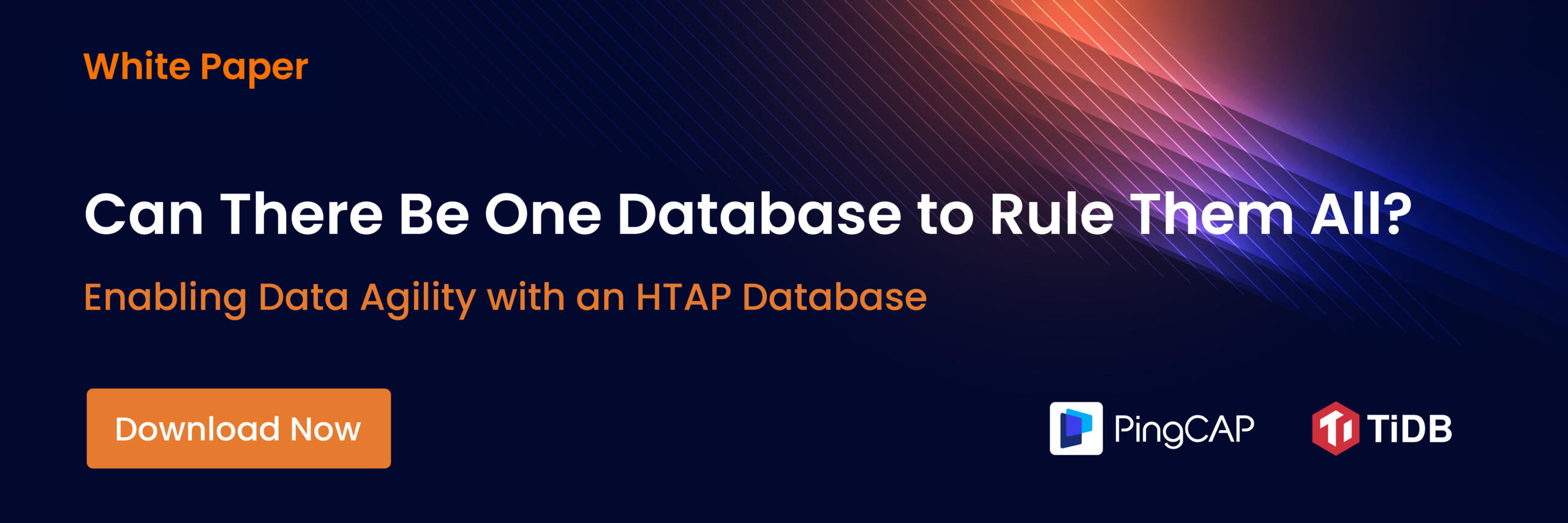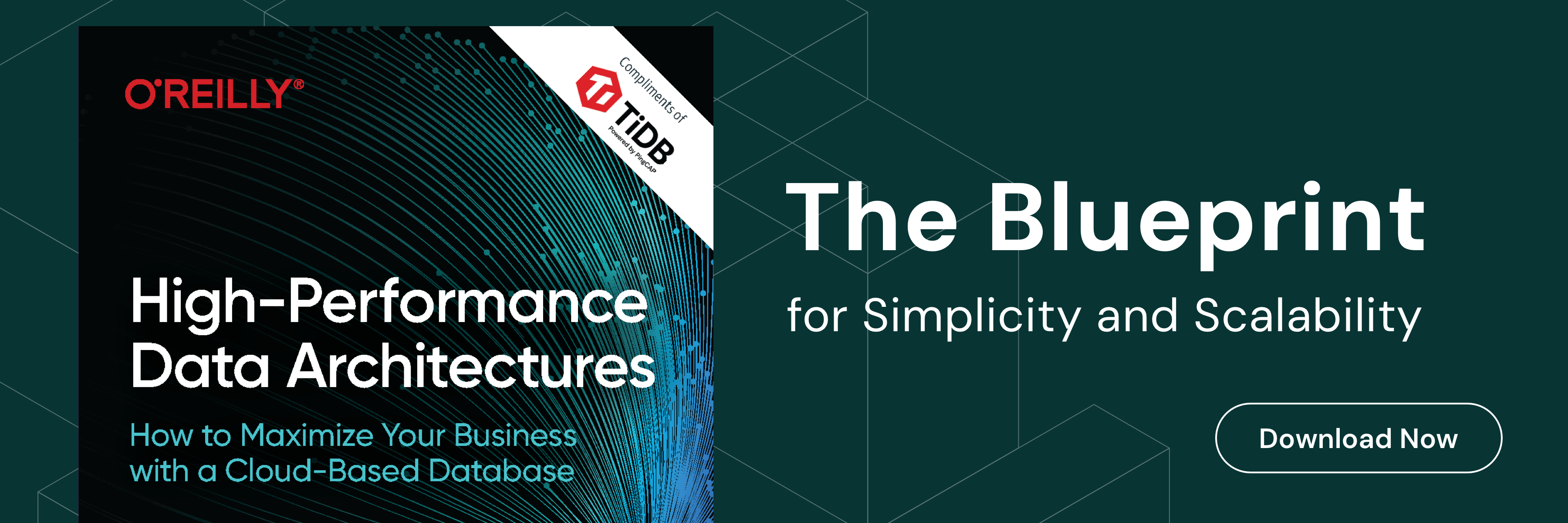When it comes to choosing a database for large-scale applications, the decision often boils down to a few key contenders. Among them, HBase and TiDB are two prominent options, each with unique features and benefits. In this blog, we will explore these two databases, compare their strengths and weaknesses, and provide insights into which one might be the better choice for your needs.
Understanding HBase and TiDB
HBase
HBase is an open-source, non-relational, distributed database modeled after Google’s Bigtable and is written in Java. It is designed to handle large amounts of data across many commodity servers, providing a fault-tolerant way of storing sparse data sets. HBase is part of the Hadoop ecosystem and uses HDFS (Hadoop Distributed File System) as its storage layer. It is ideal for scenarios requiring random, real-time read/write access to Big Data.
Learn more about HBase on the Apache HBase website.
TiDB
TiDB, developed by PingCAP, is an open-source, NewSQL database that supports Hybrid Transactional and Analytical Processing (HTAP) workloads. It is designed to be MySQL compatible, ensuring easy migration and adoption for users familiar with MySQL. TiDB’s architecture separates storage and compute, utilizing TiKV for storage and the TiDB server for SQL processing. This design allows for horizontal scalability and high availability without manual sharding, making it a robust solution for both OLTP (Online Transactional Processing) and OLAP (Online Analytical Processing) workloads.
Discover more about TiDB on the PingCAP website.
Key Differences Between HBase and TiDB
| Feature | HBase | TiDB |
| Data Model | Column-oriented | Relational |
| Query Language | HBase APIs | SQL (MySQL compatible) |
| Scalability | Horizontal scaling by adding region servers | Horizontal scaling by adding TiKV and TiDB nodes |
| Performance | Optimized for write-heavy workloads | Balanced for both read and write operations |
| High Availability | Achieved through HDFS replication and Zookeeper | Raft consensus algorithm, automatic failover |
| Fault Tolerance | HDFS-based data redundancy | Raft protocol for strong consistency |
| Ecosystem | Part of Hadoop ecosystem, integrates with Hive, Pig, and Spark | MySQL-compatible clients and tools |
| Tooling | Requires technical expertise for management | User-friendly tools, TiDB Dashboard |
1. Data Model and Query Language
HBase:
- Data Model: HBase stores data in a column-oriented fashion, similar to Bigtable. It organizes data into tables, which are further divided into rows and columns.
- Query Language: HBase does not support SQL. Instead, it uses its own APIs for data manipulation, which can be a hurdle for users accustomed to SQL.
TiDB:
- Data Model: TiDB uses a relational data model similar to MySQL, making it familiar to those who have used relational databases.
- Query Language: TiDB fully supports SQL, including complex queries and transactions. This makes it easy for developers to transition from MySQL to TiDB without learning a new language.
2. Scalability and Performance
HBase:
- Scalability: HBase scales horizontally by adding more region servers to the cluster. It can handle petabytes of data across thousands of nodes.
- Performance: HBase is optimized for write-heavy workloads. However, read performance can be affected due to the need for frequent compactions and garbage collection.
TiDB:
- Scalability: TiDB also scales horizontally but does so more efficiently by separating storage and compute. Adding more TiKV nodes improves storage capacity, while adding TiDB servers enhances processing power.
- Performance: TiDB provides balanced performance for both read and write operations. Its HTAP capabilities allow it to handle transactional and analytical workloads simultaneously without compromising performance.
3. High Availability and Fault Tolerance
HBase:
- High Availability: Achieved through HDFS replication and the use of Zookeeper for cluster coordination. However, setting up and maintaining an HBase cluster can be complex.
- Fault Tolerance: HBase relies on HDFS for data redundancy. In case of node failure, data is replicated across different nodes, ensuring durability.
TiDB:
- High Availability: TiDB uses Raft consensus algorithm for data replication, ensuring that data is consistently available even in the event of node failures. It also supports automatic failover.
- Fault Tolerance: TiKV, the storage component of TiDB, ensures data is replicated across multiple nodes using the Raft protocol. This provides strong consistency and fault tolerance.
4. Ecosystem and Tooling
HBase:
- Ecosystem: Being a part of the Hadoop ecosystem, HBase integrates well with other Hadoop components like Hive, Pig, and Spark.
- Tooling: There are several tools available for managing and monitoring HBase clusters, but they often require deep technical expertise to use effectively.
TiDB:
- Ecosystem: TiDB has a growing ecosystem with integrations for various tools and platforms. It supports MySQL-compatible clients and tools, making it easier to integrate with existing systems.
- Tooling: TiDB provides user-friendly tools for cluster management, monitoring, and performance tuning. The TiDB Dashboard offers a comprehensive view of cluster health and performance.
Use Cases
When to Choose HBase
- Real-time Big Data Applications: Ideal for scenarios where you need to handle large-scale, write-heavy workloads with real-time read/write access.
- Hadoop Ecosystem Integration: If your infrastructure is already built on Hadoop, HBase might be the natural choice due to its seamless integration with other Hadoop components.
When to Choose TiDB
- Hybrid Workloads: Perfect for environments where you need to handle both transactional and analytical workloads simultaneously.
- MySQL Compatibility: If you are looking for a scalable solution without giving up SQL and the MySQL ecosystem, TiDB offers a smooth transition with minimal changes to your application code.
Conclusion
Both HBase and TiDB have their strengths and are suited for different types of applications. HBase is a powerful choice for real-time Big Data applications within the Hadoop ecosystem, while TiDB stands out for its ease of use, scalability, and ability to handle hybrid workloads. Evaluating your specific requirements and existing infrastructure will help you decide which database is the better fit for your needs.
For organizations seeking a modern, scalable solution with robust SQL support, TiDB represents a forward-thinking choice that can address both transactional and analytical demands effectively.
For further information, you can refer to the following resources:



